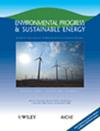Removing emerging organic pollutants (oxytetracycline) by engineered biochars originated from agricultural wastes
Abstract
Engineered biochars derived from five types of agricultural by-products—macadamia nut shells, rice husks, durian peel, coir, and straw—were synthesized using a hydrothermal method combined with pyrolysis for oxytetracycline (OTC) treatment. N2 and CO2 adsorption–desorption, FE-SEM (Field Emission - Scanning Electron Microscopy) and FTIR (Fourier-transform infrared spectroscopy) results were utilized to characterize their properties. While the surface elements and functional groups of these five biochars were relatively similar, significant differences were observed in their porous structures. Batch and continuous adsorption studies provided valuable insights into the dynamic behavior of biochar materials in the removal of OTC, highlighting variations in performance among different biochar types and emphasizing the importance of sustained efficacy over multiple cycles for practical applications. Coir biochar demonstrated the highest OTC adsorption capacity, achieving 93% in batch adsorption and exhibiting complete OTC treatment after eight reuse cycles. Durian peel and straw biochars also exhibited strong performance in both batch and continuous adsorption. However, rice husk and macadamia nut shell biochars displayed lower efficacy in OTC treatment. The dominant mechanism for adsorption appears to be pore filling, facilitated by Van der Waals forces between OTC molecules and the walls of micro-mesopore structures within the range of 1.2–10 nm.
Statement of Industrial Relevance
The study's findings are pivotal for innovating, modeling, and designing effective systems to remove emerging organic pollutants from water.
Novelty or Significance
A straightforward, easily scalable, and sustainable solution has been introduced for treating emerging organic pollutants from water, utilizing engineered biochars derived from agricultural wastes.
Plain Language Summary
In this study, we explored the use of engineered biochars made from agricultural by-products to treat a common antibiotic pollutant, oxytetracycline (OTC), in water. We created these biochars from materials like macadamia nut shells, rice husks, durian peel, coir, and straw using a special method. By analyzing their properties, we found that although these biochars had similar chemical surface features, they differed significantly in their overall porous structure. Some of these engineered biochars were effective in removing OTC from water, both in controlled lab conditions and in real-world scenarios. Specifically, coir biochar showed the best results, removing 93% of OTC in lab tests and staying effective even after being reused multiple times. Durian peel and straw biochars also performed well. However, rice husk and macadamia nut shell biochars were less effective in removing OTC. We found that the main way these biochars removed OTC was by filling up tiny pores in their structure, which trapped the OTC molecules. This study provides valuable insights into using biochars to clean up water polluted with antibiotics, offering a sustainable and practical solution for water treatment.

 求助内容:
求助内容: 应助结果提醒方式:
应助结果提醒方式:


